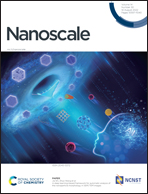2D MXene interfaces preserve the basal electrophysiology of targeted neural circuits†
Abstract
Neural interfaces enable the monitoring of the state of the brain and its composite cell networks, as well as stimulate them to treat nervous disorders. In addition to their highly efficient charge transduction and stability during operation, the neural electrodes should avoid altering the physiological properties of targeted neuronal tissues. Two-dimensional (2D) MXene materials integrate the advantages of metallic conductivity, high specific-surface area and surface functionality in aqueous dispersions, showing promising potential in neural interface applications. Here, we apply uncoated Ti3C2Tx MXene to interface neuronal development. The impacts of the uncoated Ti3C2Tx MXene interface on neuronal development and neuronal microcircuit activity were tested for the first time. Compared to the standard neuronal culture with a poly-L-ornithine coated coverslip, uncoated Ti3C2Tx MXene surfaces did not affect the cell morphology, density, neuron ratios, maturation or the compositions of the neuronal network. Moreover, calcium imaging, spontaneous postsynaptic currents (sPSCs) and also miniature postsynaptic currents (mPSCs) were recorded to demonstrate that Ti3C2Tx MXene interfaces preserved the basal physiology of neuronal activity. The ability to interface neuronal circuit development without altering neuronal signaling properties enables the construction of MXene-based neural prosthetic devices for neuroscience research, diagnosis, and therapies.



 Please wait while we load your content...
Please wait while we load your content...